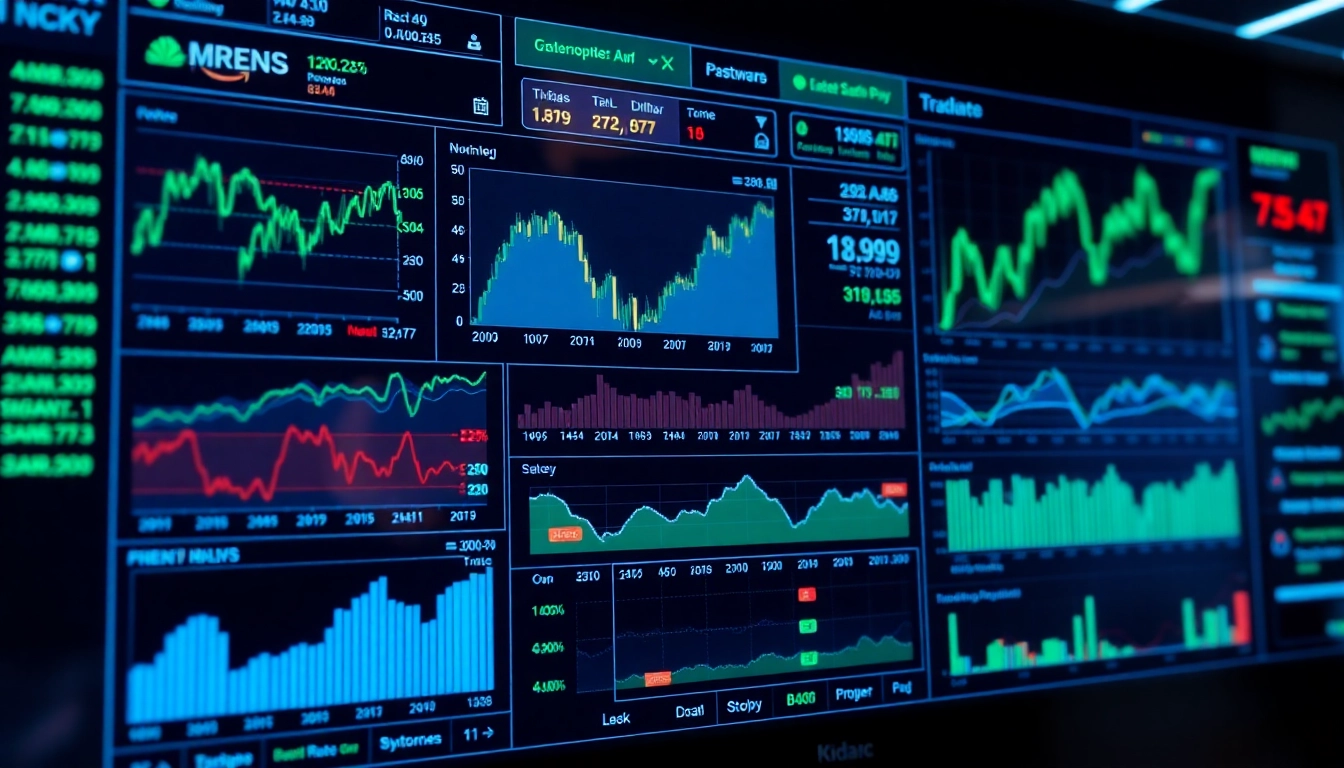Current Stock Market Landscape: Trends, Indicators, and Strategic Insights
Understanding Current Stock Market Movements
The global equity landscape remains a complex tapestry, demonstrating a mix of resilience and volatility. Recent Stock Market Updates reveal that major international indices like the EuroStoxx 600 and the NASDAQ are experiencing subtle shifts amid fluctuating investor sentiment. European shares, for example, closed marginally higher, gaining support from defensive sectors such as healthcare and defense stocks, despite broader uncertainties stemming from macroeconomic data. Meanwhile, Wall Street indices have seen declines, largely driven by geopolitical tensions and mixed corporate earnings performances.
This nuanced performance underscores the importance of dissecting underlying factors influencing daily market dynamics. In particular, commodity prices like gold have soared to new heights, hitting record levels, which is a sign of investors seeking safe havens amid unpredictable economies. Additionally, the deterioration or strengthening of currencies such as the US Dollar and the euro temporarily impact cross-border investment flows, adding further layers to market complexity.
Analyzing Market Indicators and Data
Interpreting Stock Index Trends
Investors and analysts increasingly rely on stock index trends to gauge market health. For example, the S&P 500 and FTSE 100 serve as barometers of economic momentum. Notably, recent performance indicates that despite cautious optimism, underlying volatility persists, partly due to shifting monetary policies and global economic uncertainties. The 200-week trendline for Bitcoin, often touted as a critical bullish indicator, remains intact, fueling speculation about a potential full-scale bull run if support levels hold.
Role of Commodity Prices: Gold and Oil
Commodities continue to serve as vital indicators of economic sentiment. Gold prices surged past $3,500 an ounce, reflecting heightened investor demand driven by inflation concerns and currency devaluation fears. Conversely, oil prices have experienced a slight decline but are on track for weekly gains, supported by ongoing tensions in key producing regions and US-China trade considerations. These movements influence equities, with rising gold often associated with risk aversion, while fluctuations in oil impact energy sector valuations and inflation expectations.
Currency Movements and Their Effects on Stocks
Currency dynamics significantly influence international investment flows. For instance, the US dollar weakened slightly against major currencies like the yen and euro, benefiting exporters and multinational corporations. However, the dollar’s recent gains on hopes of rate cuts reflect a cautious stance by the Federal Reserve amidst inflation data. These fluctuations can alter the competitiveness of US and global stocks, molding investor strategies accordingly.
Strategies for Investors Amid Market Volatility
Risk Management Techniques
Navigating volatile markets requires disciplined risk management. Diversification remains foundational, spreading investments across various sectors and asset classes to mitigate sector-specific risks. Incorporating assets such as gold and fixed-income securities can hedge against equity market swings. Utilizing stop-loss orders and position sizing helps limit potential losses, especially during unpredictable price swings.
Opportunities in Market Rebounds
Market downturns often present buying opportunities for disciplined investors. Historical data showcase that recovered sectors, like technology and renewable energy, rebound swiftly post-correction. Active traders can capitalize on short-term momentum, while long-term investors may consider dollar-cost averaging to accumulate quality stocks at lower prices, aligning with their strategic time horizons.
Long-term vs Short-term Investment Approaches
Adopting a balanced approach tailored to individual risk appetite and investment goals is crucial. Long-term investors benefit from holding resilient assets, embracing market dips as entry points. Conversely, short-term traders focus on technical signals and macroeconomic data to execute capitalizing moves. Staying informed through real-time market updates and maintaining flexibility enhances decision-making in unpredictable conditions.
Latest News Impacting Stock Market Updates
Monetary Policy Announcements and Federal Reserve Actions
Central banks continue to shape market directions through interest rate policies. Recent comments from US Federal Reserve officials about possible rate cuts aiming to combat inflation have heightened market hopes of easier monetary conditions, contributing to dollar fluctuations and influencing equity valuations. Observers stress the importance of aligning these policies with economic data releases, such as employment reports and inflation metrics, to anticipate future moves.
Major Corporate Earnings and Mergers
Earnings season is a pivotal driver of daily market sentiment. Companies like Robinhood and MicroStrategy have posted mixed results—Robinhood achieved profitability in Q2, but revenue declined, highlighting the challenges in the fintech sector. Mergers and acquisitions also shape the landscape, with corporate reinsurance brokers like London Re expanding strategically, and the potential for significant deals creating ripple effects across markets.
Regulatory Developments and Political Factors
Regulatory shifts, such as the Bank of England’s warnings to Facebook regarding Libra, underscore the volatile regulatory environment impacting market confidence. Political developments, including U.S.-China trade relations and policy debates, continue to influence investor expectations and risk appetite, emphasizing the need for attentive analysis of geopolitical news.
Future Market Outlook and Predictions
Emerging Trends to Watch
The future of markets is increasingly intertwined with technological innovation, AI-driven research, and digital transformation. Trends such as expansion of AI-powered financial tools and growth in the cryptocurrency sector—despite recent volatility—highlight opportunities. Notably, Bitcoin’s dominance remains under scrutiny as the asset’s weekly trendline suggests potential bullish momentum if key support levels are maintained.
Technology and Innovation’s Role in Market Growth
Advancements in AI are poised to revolutionize trading strategies and risk management. Enhanced algorithms, predictive analytics, and automation capabilities enable investors to respond faster and more accurately to market signals. Companies integrating AI models internally, like Meta Platforms’ experimentations, are setting trends that could reshape competitive dynamics and operational efficiency.
Expert Predictions and Analytical Insights
Financial analysts broadly expect continued volatility amid economic uncertainties but with cautious optimism for recovery markets. Gold’s record levels and sustained oil gains suggest that risk aversion and inflation concerns will persist into the near term. Strategic allocation, a focus on quality assets, and close monitoring of macroeconomic indicators remain advisable for investors aiming to capitalize on potential rebounds.






